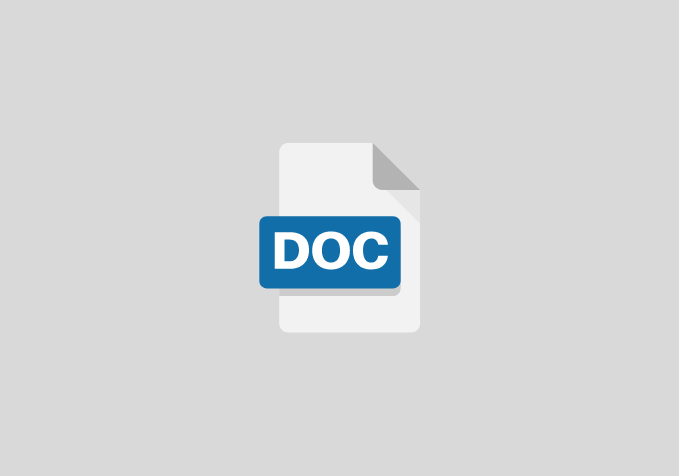Identification of Well Problems Using Well Testing
CHAPTER ONE
AIMS/OBJECTIVES:
- To study the various types of well tests carried out in the oil industry and how they can be used in identifying well problems.
- To analyze well test data gotten from UMU-N2 well in order to determines its reservoir characteristics by the application of well test knowledge.
- To make conclusions on the state of the UMU-N2 well on the basis of data analysis and give possible recommendations.
CHAPTER TWO
LITERATURE REVIEW
Oil well testing is a branch of reservoir engineering. It is one of the most powerful tools available for determining reservoir characteristics. Generally, a well test is a period of time during which the rate and/or pressure of a well is recorded to estimate well or reservoir properties to prove reservoir productivity or to obtain general reservoir management data. It involves producing a well at constant rate or series of rates, some of which may be zero(well closed in) while simultaneously taking a continuous recording of the changing pressure in the wellbore using some of the pressure measuring devices. Well test information is second only to production data in importance for the prudent management of oil or gas reservoir. As such, well testing is an integral part of the overall production and depletion strategy of a reservoir. The interpretation of pressure data recorded during a well test has been used for many years to evaluate the reservoir characteristics. Static reservoir pressure measured in shut-in wells is used to predict reserves in place through material balance calculations. Transient pressure analysis provides a description of the reservoir flowing behavior. Many methods have been proposed for interpretation of transient tests but the best known and most widely used is Horner’s. More recently, type curves which indicate the pressure response of flowing wells under a variety of well and reservoir configurations were introduced. Recently, the quality of well test interpretations has improved because of the availability of accurate pressure data (from electronic pressure gauges) and the development of new software for computer aided analysis.
DIVISION OF WELL TESTING
Well testing can be divided into two viz:
- Surface well testing
- Sub-surface well testing
OBJECTIVES OF SURFACE WELL TESTING
- To determine the productivity or producing ability of a hydrocarbon bearing formation
- To establish the well completion method
- To determine the need to stimulate the producing formation
- To establish actual well producing rates
- To establish Inflow Performance Relationship (IPR) or the relationship between the producing rates and varying bottom hole pressure
- To determine Gas-Oil ratio
OBJECTIVES OF SUB-SURFACE WELL TESTING
- To establish the reservoir permeability and reservoir porosity
- The reservoir flowing and static pressures
- The reservoir fluid viscosity
- Skin effect or degree of well damage
- The reservoir limit
CHAPTER THREE
WELL HISTORY
The UMU-N2 well is one of the wells in the Umusadege field in Kwale, Delta state. It is an onshore oil and gas field located in north central of the Niger Delta basin. The field was discovered in 1974. The UMU-N2 well was drilled in 1980 and flowed at a rate of 1673bbls/day. It is being operated by Midwestern Oil and gasalthough, the field was originally permitted to Elf Petroleum Nigeria.The well was drilled to a depth of 9560ft.The well experienced high sand and water production. The Well was closed in 1996.
CHAPTER FOUR
DATA ANALYSIS AND INTERPRETATION
PRODUCTION DATA ANALYSIS
From the production data of UMU-N2 well, the production started in march 1981 at a rate of 1673 bopd and choke size of 28/64. With time, the production rate kept decreasing with increasing BS&W. Gravel packing was done to curb the sand production. As a result, the production rate increased gradually. With further production, the rate reduced with increasing BS&W until the well was shut in.
ANALYSIS OF BHP DATA
The BHP survey was carried out on June 1990.The well was produced for8hrs before it was shut in. The data obtained are analyzed as follows:
PERMEABILITY(K)
The permeability was found to be 38.8md. This reduced permeability is indicative of damage caused during drilling and completion process. This could be as a result of migration of fine particles which could block the pore spaces. It could also be caused during the perforation process.
CHAPTER FIVE
CONCLUSION AND RECOMMENDATION
CONCLUSION
From the analysis carried out on Umu-N2 well, it was discovered that there was formation damage which has made the permeability inadequate to allow the well to produce at rates high enough for the timely recovery of investment in drilling and completing the well. Also, the high sand and water production is detrimental to high productivity.
RECOMMENDATION
- The formation damage should be removed or repaired. This requires a damage removal technique which is usually matrix acidizing but may occasionally involve hydraulic fracturing
- As for the sand production, the wellbore should be cleaned out and the gravel pack re-installed such that it has high intergrity.
- The excessive water production can be curbed by squeezing off the perforations and re-perforating at a suitable upper interval.
REFERENCES
- Agarwal, R. G., Al-Hussainy, R. and Ramey, H. J.(1970)An Investigation of Wellbore Storage and Skin Effect in Unsteady Liquid Flow: I. Analytical Treatment. SPE-2466-PA
- Energy Resources conservation board(ERCB) 1975Theory and Practice of the p 3Testing of Gas Wells,Thirdedition.pp 3,4,5
- Fekete Associates Inc. Fast Well Test Help Guide. 2
- IlfiBinti Edward Yasin (2012) Pressure Transient Analysis Using Generated Well Test Data From Simulation of Selected Wells in Norne Field, Norwegian University of Science and Technology.
- I.T.J. Kuiper(2009):Well Testing in the framework of system identification, Delft University of technology.
- John lee(1982): Well Testing SPE AIME, New York Dallas, USAOffia U.S. 2010 and Okorie O.M. Fundamentals of Well Testing by Ava publisher
- Schlumberger (1998): Introduction to Well Testing: Section 5 Basic Well Test Interpretation.


